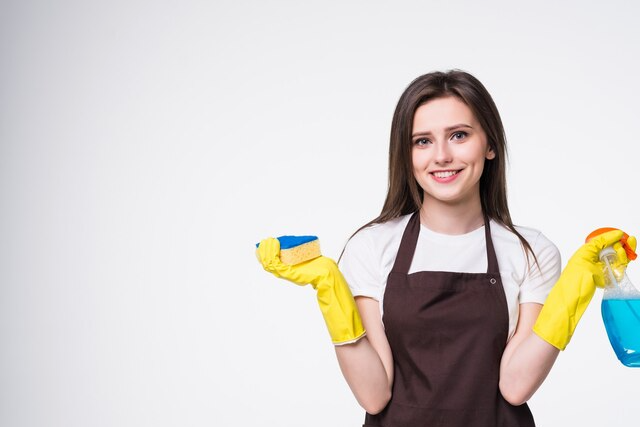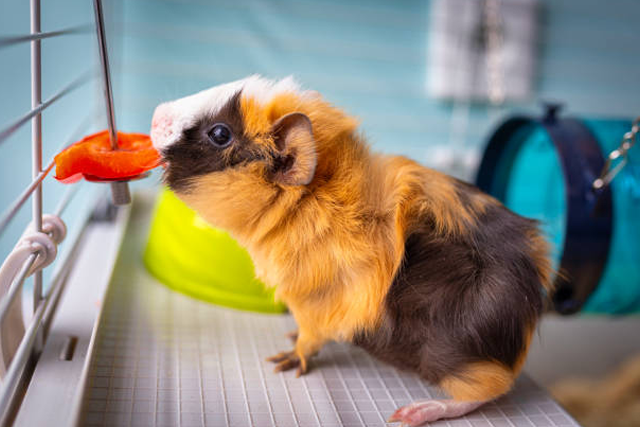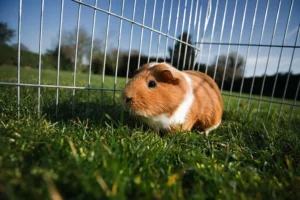Guinea pigs, cherished for their charming personalities and gentle nature, make delightful companions.
Responsible pet ownership extends beyond feeding and playtime; it necessitates maintaining a clean and comfortable living environment.
This comprehensive guide aims to answer a pivotal question for guinea pig enthusiasts: How often should you clean a guinea pig’s cage?
Throughout this exploration, we’ll delve into various aspects of cage maintenance, ensuring a holistic approach to the well-being of your furry friend.

The frequency of cleaning your guinea pig’s cage hinges on factors like cage size, the number of guinea pigs, and the chosen bedding.
As a guiding principle, daily spot-cleaning is imperative, with a more extensive deep clean recommended at least weekly.
Larger or multi-pig habitats might necessitate more frequent attention to ensure optimal hygiene.
Different Ways to Clean a Guinea Pig Cage
Maintaining a pristine environment involves the dynamic duo of spot-cleaning and deep cleaning.
Daily spot-cleaning tackles immediate messes, while a weekly deep clean involves bedding changes, accessory washing, and a comprehensive cage disinfection.

1. Spot Cleaning:
- Swift removal of waste, uneaten food, and soiled bedding on a daily basis.
- Use small shovels or spoons to address specific areas promptly.
- Enhances hygiene and serves as a daily health check for your guinea pig.
2. Deep Cleaning:
- Conducted weekly for a more thorough cleansing routine.
- Temporarily relocate your guinea pig to a secure space.
- Remove and wash all accessories, dispose of soiled bedding, and scrub the cage surfaces.
- Ensure the cage is completely dry before reintroducing your pet.
3. Disinfecting: This process should be conducted monthly or every two months and involves disinfecting the cage with a bleach solution.
Be sure to rinse the cage thoroughly before adding fresh bedding.
By diligently following these cleaning methods, you can contribute to your guinea pig’s health and prevent respiratory issues.
How to Spot-Clean a Guinea Pig’s Cage

Spot-cleaning is a quick and easy process that involves removing soiled bedding, uneaten food, and waste.
Use a small shovel or spoon to scoop out the affected areas, replacing soiled bedding with fresh material.
Regular spot-cleaning not only keeps the cage hygienic but also helps you monitor your guinea pig’s health by identifying any unusual changes in their waste.
How to Deep Clean a Guinea Pig’s Cage

Deep cleaning is a more comprehensive process that should be done at least once a week.
Start by removing your guinea pig from the cage and placing them in a secure and comfortable space.
Take out all accessories, wash them thoroughly, and discard any old or soiled bedding.
Scrub the cage with a mild, pet-safe cleanser, and ensure it’s completely dry before reintroducing your guinea pig.
How to Disinfect a Guinea Pig’s Cage

Disinfecting the cage is crucial to eliminate harmful bacteria and maintain a healthy environment for your guinea pig.
Choose a pet-safe disinfectant or a mixture of white vinegar and water to clean the cage surfaces thoroughly.
Allow the cage to air-dry before placing fresh bedding and accessories.
Choosing Safe Cleansers for a Guinea Pig Cage

Opt for pet-safe cleansers that are free from harsh chemicals and fragrances.
White vinegar diluted with water is an excellent natural option.
Additionally, there are commercial cage-cleaning solutions specifically formulated for small animals that effectively eliminate odors and bacteria without posing a threat to your guinea pig’s health.
Minimizing the Odor in Your Guinea Pig’s Cage

Guinea pig cages can develop a distinct odor over time.
To minimize this, maintain a regular cleaning schedule, use odor-absorbing bedding, and ensure proper ventilation.
Additionally, placing a small dish of baking soda in the cage can help neutralize odors.
How to Choose a Cage for Your Guinea Pig?

Selecting the right cage is paramount for your guinea pig’s well-being.
Choose a spacious cage with a solid bottom to accommodate your pet’s natural behaviors.
Ensure easy access for cleaning and provide separate areas for eating, sleeping, and play. Consider cages with removable trays for convenient cleaning.
Frequently Asked Questions (FAQs)
Cleaning your guinea pig’s cage is a crucial aspect of responsible pet ownership. Here are answers to some common questions about cleaning guinea pig cages:
Q. Can I use regular household cleaners to clean my guinea pig’s cage?
A: It’s best to avoid regular household cleaners, as they may contain harmful chemicals. Opt for pet-safe cleansers or natural alternatives like white vinegar and water.
Q. How do I choose the right bedding for my guinea pig?
A: Choose bedding that is safe, absorbent, and free from dust. Popular options include fleece liners, aspen shavings, or paper-based bedding.
Q. My guinea pig’s cage still smells after cleaning. What can I do?
Ensure you are cleaning the cage regularly, using odor-absorbing bedding, and providing proper ventilation.
If the odor persists, consult with a veterinarian to rule out any health issues.
Final Thoughts:
Maintaining a clean and hygienic environment for your guinea pig is crucial for their health and happiness.
By incorporating regular spot-cleaning and weekly deep cleaning into your routine, using appropriate cleansers, and selecting the right cage and bedding, you can ensure a comfortable and odor-free living space for your beloved pet.
Remember to monitor your guinea pig’s behavior and consult with a veterinarian if you have any concerns about their health or well-being.
A clean cage is not just a reflection of your care but also a key factor in promoting a long and happy life for your guinea pig.



